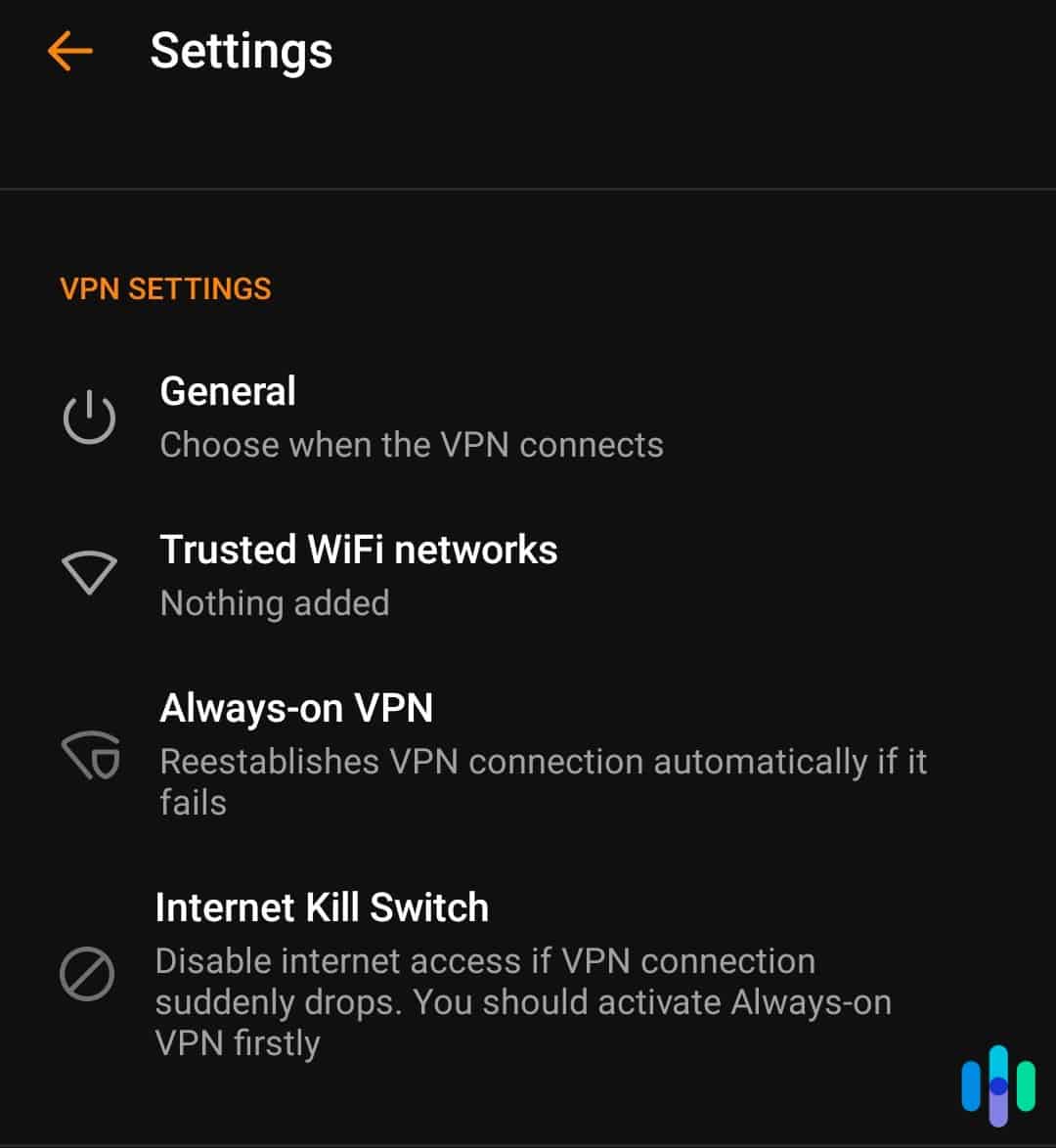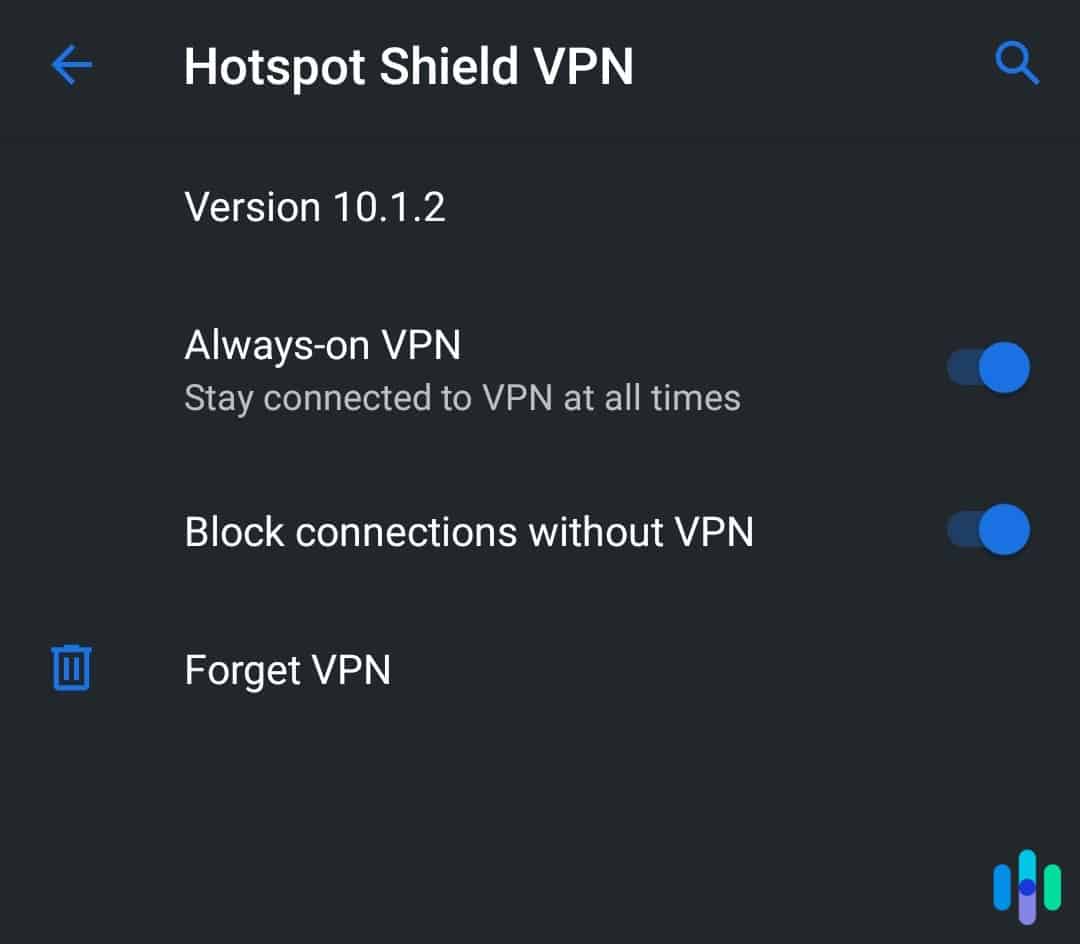Virtual private networks — more commonly known as VPNs — provide great all-around protection for your privacy. They employ various technologies to safeguard your browsing activity, ensuring its confidentiality and maintaining your anonymity while surfing the internet.
For starters, VPNs encrypt all incoming and outgoing traffic from your devices to keep snoopers guessing what you’re up to. They also hide your IP address by redirecting your online traffic through secure VPN servers.
Those are the two main functions of a VPN, but they also offer secondary features that are just as useful. One of those features is a VPN kill switch. Here we’re shining a spotlight on it. What is a VPN kill switch? How does it work? Why do you need it? In this article, we’ll answer all those questions and more. Let’s get into it.
VPN Kill Switch: What Is It?
A VPN kill switch is a simple backup measure that prevents you from accessing the internet when your connection is not secure. A VPN can protect your online privacy only when you’re connected through its secure tunnel, so a kill switch’s job is to make sure you’re connected to the encrypted tunnel before letting you surf the internet. If you happen to lose your connection, the VPN’s kill switch automatically logs you off public Wi-Fi to keep you protected. It kills your connection, hence the name “kill switch.”

Need a VPN That Does More Than Just Secure Your Connections?
A kill switch is an essential piece of VPN security. Every quality virtual private network we’ve tested has one. But the best VPNs offer more than just airtight internet connections. They let you unblock geo-restricted content and surf anonymously without throttling your internet speeds or giving your data to anyone that asks — like these top VPNs:



Why a VPN Kill Switch Is Essential
Assuming you use a VPN to protect your online privacy and not just to change your Netflix region, for instance, a kill switch is a critical feature. Your VPN may not turn on automatically, but the kill switch compels you to switch it on.

Why is this important? Well, let us explain with a hypothetical story: It’s 8 in the morning. You’ve just been through a hellish 30-minute commute. You sit in front of your desk and turn on your work computer. With a busy day ahead, you get to work right away. You write up an expense report, prepare for a presentation, send a confidential company file to your boss, and so on.
A couple of hours later, panic breaks out. There’s a spy in your network, and the file you sent earlier has just been leaked to your company’s rival. Your boss is sure she had her VPN turned on, so the leak couldn’t have come from her.
Furious, she comes knocking at your door with the IT guy, checks your computer, and, sure enough, confirms that the spy intercepted the file from your end. By lunch time, you’re heading home with a cardboard box of your personal belongings. If only you had a VPN kill switch.
That may be an incredibly unlikely scenario, but you get the point. A VPN kill switch may not directly protect your online data, but it ensures you take the right steps to avoid the consequences of an unsecure connection. That’s why a kill switch is an excellent security feature to have and to know about.
>> Read Next: What Is A Data Breach?
Dropped VPN Connections and VPN Kill Switches
There’s another scenario in which a VPN kill switch may come in handy, and it happens more often than most people think. Having tested dozens of VPNs, we know that even the the best VPN services can be unstable and erratic sometimes. Dropped connections are not uncommon, and when they happen, your device defaults back to an unsecure connection even if you’re in the middle of browsing.
The worst part? You may not notice it until it’s too late. Without a kill switch, you’ll be able to keep browsing through your unsecured connection, inadvertently leaking your browsing activity to your internet service provider (ISP) and anyone who may be tracking you.
Here’s how much of a difference having a VPN kill switch makes. As soon as your VPN connection drops, the kill switch notices. It interrupts your device’s internet connection instantly, and you won’t be able to access anything online. The only way to restore your internet connection is to reconnect to the VPN. While that might seem a bit tedious, it’s incredibly useful for security and privacy purposes.
FYI: There are several reasons your VPN could drop unexpectedly, such as a spike in users, an overcrowded server, or an unreliable VPN protocol. Read our guide on how to check if your VPN is working or not to make sure your internet activity stays private.
Do All VPN Kill Switches Work the Same Way?
Not all VPN kill switches work the same way, and there’s variance in how each VPN uses a kill switch.
Some VPNs have a kill switch that prevents only the scenario in which your VPN connection drops and your device sends and receives traffic through an unsecure connection. NordVPN’s kill switch is an example of that model. When we reviewed NordVPN, the kill switch activated only when we connected to the VPN first and then the connection dropped. It didn’t prevent us from accessing the internet if we didn’t turn on the VPN in the first place.
Others have a kill switch that prevents absolutely all internet communications unless your connection is secure. If you don’t want to risk forgetting to turn on your VPN, this is a much safer option. Proton VPN’s permanent kill switch is a good example that was available on the Windows and Linux app when we tested Proton VPN.
If you have an Android smartphone or tablet running Android 7 or later, there’s also a built-in kill switch that works pretty much like the Proton VPN’s permanent kill switch. It’s called Always-on VPN1, and you can access it in the settings no matter which VPN you’re using.
- Launch the Settings app.
- Select “Network & internet.”
- Tap “Advanced,” and then “VPN.”
- Touch the gear icon next to the VPN service you’re using.
- Toggle on Always-on VPN.

If you follow those steps, your phone or tablet will not connect to the internet unless you connect to the selected VPN first.
FYI: Not all VPNs with a kill switch have the feature switched on by default. It’s always a good idea to check your VPN settings via the VPN app before connecting for the first time.
Are There Downsides to Using a Kill Switch?
We’ve pretty much established that having and using a VPN kill switch is essential, but are there any downsides? Like everything else when it comes to protecting your privacy, you may have to compromise on a few things if you want the added protection of a kill switch.
The biggest downside of using a kill switch is that, if it activates, it could disrupt whatever you’re doing online. That’s not much of a hassle if you’re only browsing. Just reconnect to the VPN and hit that reload button, and you’re back on track. It’s a different story, however, if you’re downloading a large file, playing an online game, conferencing with your boss, or in the middle of writing an important paper. In such scenarios, a VPN kill switch could seriously disrupt your flow or cause you to lose things.

There are a couple of solutions for that. First, find a reliable VPN. The kill switch interferes when the VPN connection drops, so select a VPN with a more reliable connection. That means having a tested and proven VPN protocol, a healthy number of servers, and fast speeds.
Second, find a VPN that lets you whitelist apps to exclude them from the kill switch’s effects. If you whitelist an app, it’ll be able to bypass the kill switch, allowing you to continue whatever you’re doing while the kill switch pauses everything else. Kill switch whitelisting is included in every NordVPN subscription, but it works only on Windows and macOS.2
Finally, if you’re working on a document or spreadsheet, make sure the autosave function is turned on. This goes for anything else you might have open and needs saving. Most softwares and services will have that function automatically available, however, it’s not uncommon to hear that it’s been accidentally turned off somehow. So, if you can, take a few extra steps to ensure your work gets saved automatically to avoid losing anything important. Similarly, if you can back up any files or work automatically, we recommend that, too.
Pro Tip: Keep in mind that a whitelisted app will use your default, unsecured network when the kill switch activates, so only whitelist apps that don’t transmit sensitive data.
>> Read Next: A Side-by-Side Comparison of VPN Providers in 2024
Recap: What Is a VPN Kill Switch?
To wrap it up, a VPN kill switch is a security feature that automatically disconnects you from the internet if your VPN connection drops. Doing this adds a layer of security around your data and ensures that your internet activities remain encrypted and private.
Since one of the main goals of a VPN is to keep your IP address hidden and traffic secured, we consider a kill switch an essential feature. Otherwise, if your VPN connection were to drop without a kill switch, your IP address and traffic stays connected except without a VPN protecting your privacy. It also safeguards you against data leaks and unwanted exposure on unsecured networks.
Different VPNs will activate kill switches in various ways. For example, NordVPN will only activate a kill switch when a VPN connection is lost. However, others, like ProtonVPN will block any online access unless you’re connected to the VPN.
Using a kill switch can seem tedious, especially if your browsing is disrupted. However, using a reliable VPN with certain features can help. For example, whitelisting is a feature that allows non-sensitive apps to bypass a kill switch so you can continue your internet activity. When looking for a VPN with a kill switch, make sure the features that come with it align with your browsing needs.
Frequently Asked Questions
If there’s anything more you want to know about VPN kill switches and VPNs in general, check out these FAQs.
-
Do all VPNs have a kill switch?
Unfortunately, not all VPNs have a kill switch. It is not a rare feature, however, and most of the top VPNs have it. If you’re using an Android device, you can enable Always-on VPN with any VPN service and enjoy a kill switch–like feature.
-
Can I make my device automatically connect to my VPN as soon as it turns on?
That depends on the VPN you’re using, but many VPNs have an auto-connect feature that switches on the VPN as soon as your desktop or laptop boots up. To check, just open your VPN app, go to its settings, and find auto-connect.
-
Can I turn off the kill switch?
Most VPNs with a kill switch will let you turn off the feature, but doing so is inadvisable since it could compromise your online traffic if your VPN connection drops unexpectedly.
-
How do I restore my internet connection if the kill switch activates?
Simply reconnecting to your VPN will restore your internet connection. In some cases, the VPN reconnects automatically after a dropped connection, but you’ll usually have to do it manually via the VPN app.
-
Are there alternatives to a VPN kill switch?
If you have access to your network or device’s firewall, you can set it up so you connect to the internet only via the VPN server IP address. It would require you to use only one VPN server all the time, however. Android’s Always-on VPN feature is also a good alternative.

